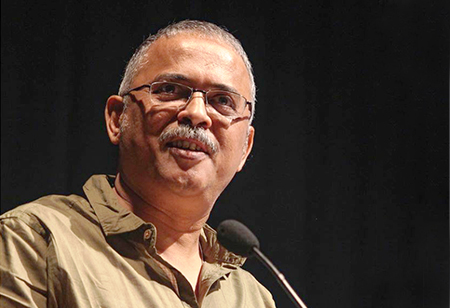
Media Industry Demands Multi-faceted Skills


Dr. Sreeram Gopalkrishnan, Officiating Director, Symbiosis Centre for Media & Communication (SCMC)
In India, we have made great strides at policy, educational and social levels to foster innovation in the past few years. But we are still far from realising our true potential. The most recent Global Innovation Index (GII) puts India in 57th place among 126 economies-- up from 81 in 2015. We are still a long way from catching up with our neighbour China (in 17th place) or even smaller Asian economies like Malaysia, Thailand and Vietnam.
We have an extraordinary advantage over many developed and developing nations both in terms of demographics and relative socio-political stability. Our young generations are growing up in a world where they have both access to technology and the freedom to use them as innovatively and productively as they can.
A field like media and communication for instance, has growing rapidly in terms of access, reach and even public participation. But what are we creating in terms of concepts, ideas, tools, technology and content that are relevant globally? We need to evolve programmes and courses that emphasise on dynamic inter-disciplinary learning.
For instance, by incorporating a concept such as design thinking in marketing communication, we transform the objective of marketing from not just selling the product but understanding how the customer is going to use the product. Design thinking is a problem solving approach that uses logic, imagination, intuition, and systemic reasoning.
Design Thinking explores the possibilities of what ‘could be’ — and creates desired outcomes that benefit the end user. We need to orient our young minds into this kind of critical, 360 degree thinking and impart skills that will enable them to convert unique concepts and ideas into services and products. The inter-disciplinary learning part is critical for this kind of conversion. Coders can enhance their skills with knowledge of design and marketing; journalists can communicate efficiently with the help of data crunching tools or graphic design; scientists can benefit from understanding public communication strategies. Inter-disciplinary learning broadens their perspective, staves off tedium and encourages collaboration — again all of these are pre-requisite for innovation.
Going back to the example of Design Thinking, it emphasises first and foremost and understanding user needs. It enables you to handle issues that are poorly characterized, think about them in human-centric ways, and adopt a useful methodology in prototyping & testing. And above all the implementation requires inputs and collaborative action from people with multiple skills and perspectives.
As a process driven by analysis and experimentation, the design thinking approach would be invaluable for a student. It can improve productivity, provide them with a greater understanding of peers and teams, and arm them with advanced problem-solving abilities.
Our students undoubtedly have the talent and the ability, but the social conditioning is harder to break. This is where our education system can play a great role, by showing them a world of possibilities and giving them effective encouragement and guidance. The new age professional should be ready for a new age media. That would be the best way to unlock our potential in the future and pave the way for an Indian innovation renaissance.
Design thinking enables you to handle issues that are poorly characterized, think about them in human-centric ways, and adopt a useful methodology in prototyping & testing
Going back to the example of Design Thinking, it emphasises first and foremost and understanding user needs. It enables you to handle issues that are poorly characterized, think about them in human-centric ways, and adopt a useful methodology in prototyping & testing. And above all the implementation requires inputs and collaborative action from people with multiple skills and perspectives.
As a process driven by analysis and experimentation, the design thinking approach would be invaluable for a student. It can improve productivity, provide them with a greater understanding of peers and teams, and arm them with advanced problem-solving abilities.
Our students undoubtedly have the talent and the ability, but the social conditioning is harder to break. This is where our education system can play a great role, by showing them a world of possibilities and giving them effective encouragement and guidance. The new age professional should be ready for a new age media. That would be the best way to unlock our potential in the future and pave the way for an Indian innovation renaissance.